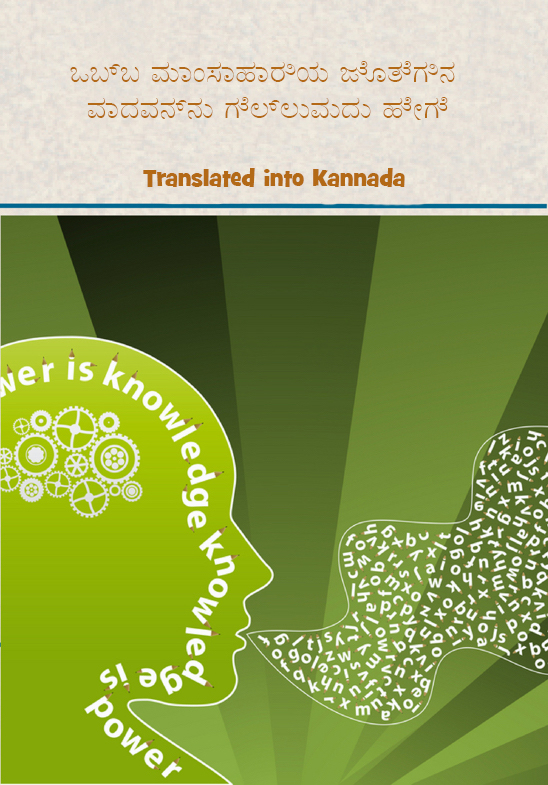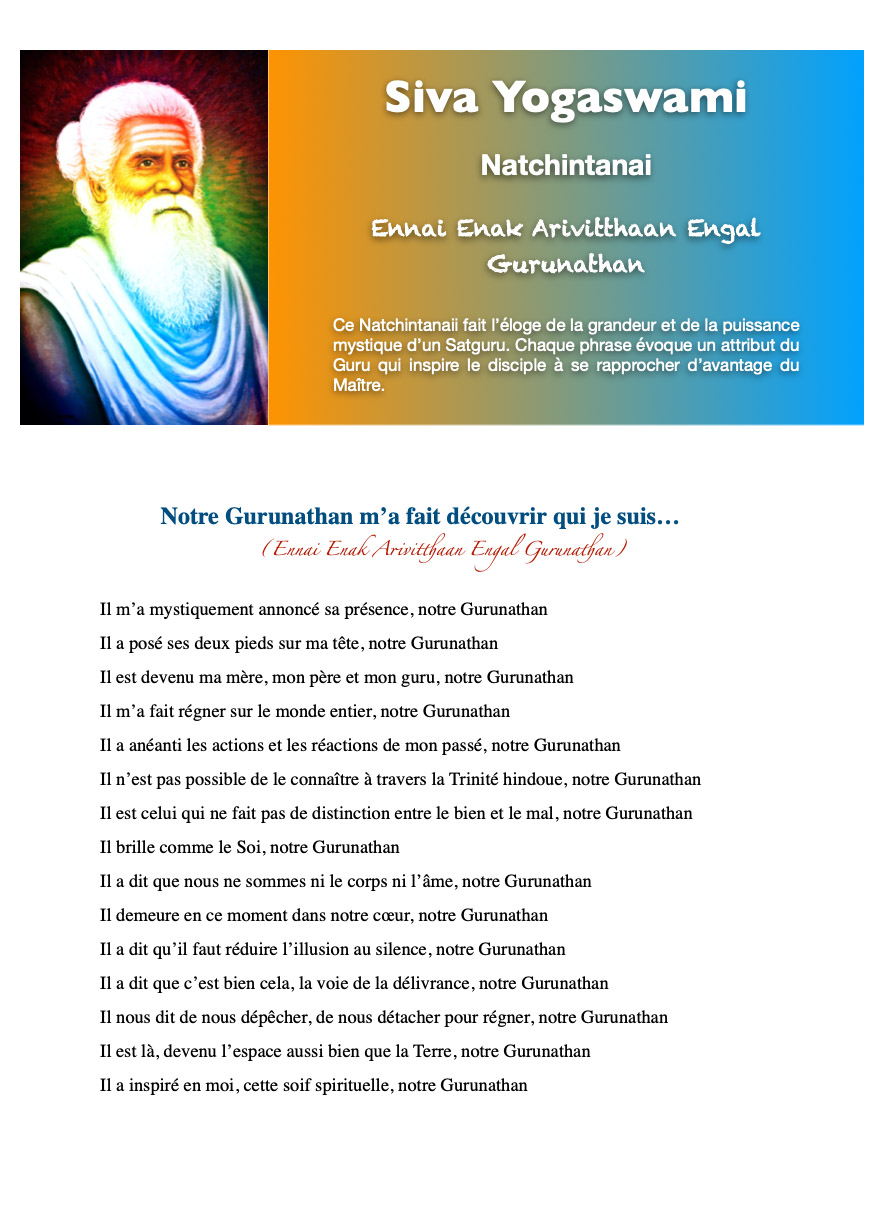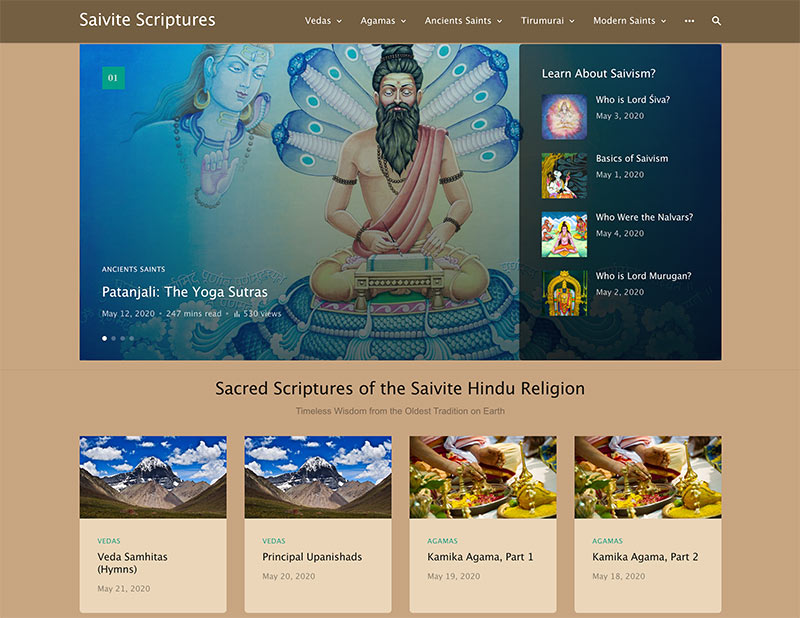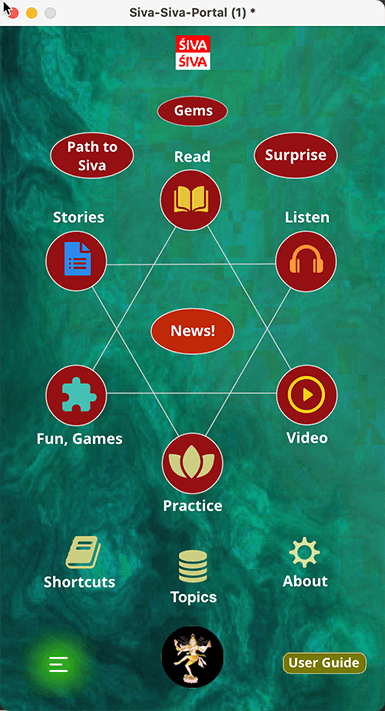How to Win an Argument with a Meat-Eater

Now Online for download (as a PDF, Epub or for Kindle) is this wonderful Kannada translation of our popular pamphlet “How to Win an Argument With a Meat-Eater .” Enjoy!
INTRODUCTION
While their numbers are rapidly growing, vegetarians are still a minority, and it is not unusual to be confronted with a meat-eater who not only protects his own right to eat flesh, but argues aggressively that vegetarians should join him in his carnivorous diet. Carnivores may regard non meat-eaters as a strange lot who munch on “rabbit food,” and whose diet doesn’t have the substance to make them strong, productive human beings. The following presentations is designed to turn the tables on such discussions by showing the devastating effects of meat-eating both on individuals and on our planet. It is based on a richly informative poster entitled, “How to win an argument with a meat-eater,” published by EARTHSAVE, an organization based in Felton, California, giving facts from Pulitzer Prize nominee john Robbins’ book Diet for a New America.
ಒಬ್ಬ ಮಾಂಸಾಹಾರಿಯ ಜೊತೆಗಿನ ವಾದವನ್ನು ಗೆಲ್ಲುವುದು ಹೇಗೆ
ಜಗತ್ತಿನಲ್ಲಿ ಸಸ್ಯಾಹಾರಿಗಳ ಸಂಖ್ಯೆ ತೀವ್ರಗತಿಯಲ್ಲಿ ಏರುತ್ತಿದ್ದರೂ ಅವರು ಇಂದಿಗೂ ಅಲ್ಪಸಂಖ್ಯಾತರೇ. ಮಾಂಸ ತಿನ್ನುವ ತಮ್ಮ ಹಕ್ಕನ್ನು ಪ್ರತಿಪಾದಿಸುತ್ತ ಸಸ್ಯಾಹಾರಿಗಳೂ ತಮ್ಮಂತೆ ಮಾಂಸಾಹಾರಿಗಳೇ ಆಗಬೇಕೆಂದು ಬಲವಾಗಿ ವಾದಿಸುವ ಜನರನ್ನು ಎದುರುಗೊಳ್ಳುವುದು ವಿರಳವೇನಲ್ಲ. ಸಸ್ಯಾಹಾರಿಗಳು ಮೊಲಗಳಂತೆ ಹಣ್ಣು, ಕಾಯಿ, ಪಲ್ಲೆ ತಿನ್ನುವ ವಿಚಿತ್ರ ಮಂದಿ; ಜನರನ್ನು ದೃಢಕಾಯರಾಗಿಸಿ, ಕಾರ್ಯ ಸಮರ್ಥರಾಗಿಸುವ ಪೌಷ್ಠಿಕತೆ ಅವರ ಆಹಾರಕ್ರಮದಲ್ಲಿ ಇಲ್ಲ ಎಂಬುದು ಮಾಂಸಾಹಾರಿಗಳ ವಾದವಿದ್ದೀತು. ಈ ತೆರನಾದ ವಾದವನ್ನು ತಲೆಕೆಳಗು ಮಾಡುವ ವಾಸ್ತವಿಕ ಸಂಗತಿಗಳ ಅವಲೋಕನ ಇಲ್ಲಿದೆ. ವ್ಯಕ್ತಿ, ಪರಿಸರ ಹಾಗೂ ನಮ್ಮೀ ಗ್ರಹದ ಮೇಲೆ ಮಾಂಸ ಸೇವನೆಯಿಂದ ಆಗುವ ವಿಧ್ವಂಸಕ ಪರಿಣಾಮಗಳ ಚಿತ್ರಣ ಇದು. ಕ್ಯಾಲಿಫೋರ್ನಿಯಾದ ಫ್ಹೆಲ್ಟನ್ ನಗರದ “ಅರ್ತ್ ಸೇವ್” ಸಂಸ್ಥೆ ಪ್ರಕಟಿಸಿರುವ “ಒಬ್ಬ ಮಾಂಸಾಹಾರಿಯ ಜೊತೆ ವಾದ ಗೆಲ್ಲುವುದು ಹೇಗೆ” (ಹೌ ಟು ವಿನ್ ಎನ್ ಆರ್ಗ್ಯುಮೆಂಟ್ ವಿತ್ ಎ ಮೀಟ್ ಈಟರ್) ಎಂಬ ಭಿತ್ತಿಪತ್ರ ಈ ಬರಹಕ್ಕೆ ಆಧಾರ. ಈ ಮಾಹಿತಿಪೂರ್ಣ ಭಿತ್ತಿಪತ್ರಕ್ಕೆ ಅಮೆರಿಕದ ಪುಲಿಟ್ಜರ್ ಪ್ರಶಸ್ತಿಗೆ ಪರಿಗಣಿತವಾದ ಜಾನ್ ರಾಬಿನ್ಸ್ ಅವರ “ಡಯೆಟ್ ಫ್ಹಾರ್ ಎ ನ್ಯೂ ಅಮೆರಿಕ” ಪುಸ್ತಕವೇ ಪ್ರೇರಣೆ.
1. THE HUNGER-ARGUMENT AGAINST MEAT-EATING
Much of the world’s massive hunger problems could be solved by the reduction or elimination of meat-eating. The reasons: 1) live-stock pasture needs cut drastically into land which could otherwise be used to grow food; 2) vast quantities of food which could feed humans is fed to livestock raised to produce meat.
* One hundred million people could be adequately fed using the land freed if Americans reduced their intake of meat by a mere 10%
* Eighty percent of the corn and 95% of the oats grown in the U.S. is eaten by livestock. The percentage of protein wasted by cycling grain through livestock is calculated by experts as 90%
One acre of land can produce 40,000 pounds of potatoes, or 250 pounds of beef. Fifty-six percent of all U.S. farmland is devoted to beef production, and to produce each pound of beef requires, 16 pounds of edible grain and soybeans, which could be used to feed the hungry.
೧. ಮಾಂಸಾಹಾರದ ವಿರುದ್ಧ ಹಸಿವಿನ ವಾದ (ಮಾಂಸ ಭಕ್ಷಣೆಯ ವಿರುದ್ಧದ ವಾದ – ಹಸಿವು ಮತ್ತು ಮಾಂಸಭಕ್ಷಣೆ)
ಮಾಂಸಹಾರವನ್ನು ವರ್ಜಿಸುವುದರಿಂದ ಅಥವಾ ಗಣನೀಯವಾಗಿ ಕಡಿಮೆ ಮಾಡುವುದರಿಂದ ಜಗತ್ತಿನ ಹಸಿವಿನ ಸಮಸ್ಯೆಯನ್ನು ನೀಗಿಸುವುದು ಸಾಧ್ಯ. ಅದು ಹೇಗೆ – ಈ ಮುಂದಿನ ಅಂಕಿ ಅಂಶಗಳನ್ನು ನೋಡಿ.
೧. ಮಾಂಸಕ್ಕಾಗಿಯೇ ಸಾಕಿ ಬೆಳೆಸುವ ಪಶುಗಳಿಗೆ ಹುಲ್ಲು, ಧಾನ್ಯ ಒದಗಿಸಲೆಂದು ಬಳಸುವ ಅಪಾರ ಭೂಮಿಯನ್ನು ಮನುಷ್ಯರಿಗಾಗಿ ಧಾನ್ಯ, ತರಕಾರಿ, ಹಣ್ಣುಗಳನ್ನು ಬೆಳೆವ ಜಮೀನಾಗಿ ಪರಿವರ್ತಿಸಬಹುದು.
೨. ಮನುಜರ ಹಸಿವು ತಣಿಸುವ ಬದಲು ಮಾಂಸಕ್ಕಾಗಿ ಜಾನುವಾರುಗಳನ್ನು ಕೊಬ್ಬಿಸಲು ಉಣಿಸುವ ಆಹಾರ ಅಪಾರ. ಈ ಕೆಳಗಣ ವಿಷಯಗಳನ್ನು ನೋಡಿ:
ಅಮೆರಿಕನ್ನರು ತಮ್ಮ ಮಾಂಸ ಸೇವನೆಯನ್ನು ಕೇವಲ ಶೇ. ೧೦ ರಷ್ಟು ತಗ್ಗಿಸಿದರೆ ಸಾಕು, ಅದರಿಂದ ಕೃಷಿಗೆ ಲಭ್ಯವಾಗುವ ಹೆಚ್ಚುವರಿ ಭೂಮಿಯಲ್ಲಿ ೧೦ ಕೋಟಿ ಜನರಿಗೆ ಸಾಲುವಷ್ಟು ಅಧಿಕ ಆಹಾರ ಬೆಳೆಸಬಹುದು.
ಅಮೆರಿಕದಲ್ಲಿ ಬೆಳೆಯುವ ಜೋಳದ ಶೇ. ೮೦ ಭಾಗ ಹಾಗೂ ಓಟ್ಸ್ ನ ಶೇ. ೯೫ ಭಾಗ ಬಾಡೂಟಕ್ಕೆಂದೇ ಸಾಕುವ ಜಾನುವಾರುಗಳ ಹೊಟ್ಟೆ ಸೇರುತ್ತದೆ. ಪ್ರಾಣಿಗಳಿಗೆ ಧಾನ್ಯ ಉಣಿಸಿ, ಕೊಬ್ಬಿಸಿ, ಕೊಂದು ತಿನ್ನುವ ಪ್ರಕ್ರಿಯೆ ಶೇ. ೯೦ ರಷ್ಟು ಪ್ರೊಟೀನ್ ವ್ಯರ್ಥವಾಗಲು ಕಾರಣ ಎಂದು ಪರಿಣಿತರು ಹೇಳುತ್ತಾರೆ.
ಒಂದು ಎಕರೆ ಜಾಗದಲ್ಲಿ ೪೦,೦೦೦ ಪೌಂಡ್ ಆಲೂಗೆಡ್ಡೆ ಬೆಳೆಯಬಹುದು ಇಲ್ಲವೇ ಪಶು ಆಹಾರ ಬೆಳೆದು ೨೫೦ ಪೌಂಡ್ ಗೋಮಾಂಸ ಉತ್ಪಾದಿಸಬಹುದು. ಅಮೆರಿಕದ ಕೃಷಿಯೋಗ್ಯ ಭೂಮಿಯ ಶೇ. ೫೬ ರಷ್ಟು ಹೀಗೆ ಕೊಬ್ಬಿಸಿ ಕೊಲುವ ರಾಸುಗಳ ಆಹಾರ ಬೆಳೆಯಲೆಂದೇ ಸೀಮಿತ. ಪ್ರತಿ ಪೌಂಡ್ ಮಾಂಸ ಪಡೆಯಲು ಹಸುಗಳಿಗೆ ೧೬ ಪೌಂಡ್ ಸೋಯಾಬೀನ್ ಹಾಗೂ ಧಾನ್ಯ ಉಣಿಸಬೇಕು. ಈ ಎಲ್ಲ ಭೂಮಿ ಜನರ ಹೊಟ್ಟೆ ತುಂಬಿಸುವ ಧಾನ್ಯ, ತರಕಾರಿ, ಹಣ್ಣು ಬೆಳೆಯಲು ಬಳಕೆಯಾದರೆ ಜಗದ ಹಸಿವು ಇಂಗುವುದು ನಿಶ್ಚಿತ.
2. THE ENVIRONMENTAL ARGUMENT AGAINST MEAT-EATING
Many of the world’s massive environmental problems could be solved by the reduction or elimination of meat-eating, including global warming, loss or topsoil, loss of rainforests and species extinction.
* Trees, and especially the old-growth forests, are essential to the survival of the planet. Their destruction is a major cause of global warming and top soil loss. Both of these effects lead to diminished food production. Meat-eating is the number one driving force for the destruction of these forests. Two hundred and sixty million acres of U.S. forestland has been cleared for cropland to produce the meat-centered diet. Fifty-five square feet of tropical rainforest is consumed to produce every quarter-pound of rainforest beef. An alarming 75% of all U.S. topsoil has been lost to date. Eighty-five percent of this loss is directly related to livestock raising.
* Another devastating result of deforestation is the loss of plant and animal species. Each year, 1,000 species are eliminated due to destruction of tropical rainforests for meat grazing and other uses. The rate is growing yearly.
To keep up with U.S. consumption, 300 million pounds of meat are imported annually from Central and South America. This economic incentive impels these nations to cut down the forests to make more pastureland. In effect these countries are being drained of their resources to put meat on the table of Americans while 75% of all Central American children under the age of five are undernourished.
೨. ಮಾಂಸಾಹಾರದ ವಿರುದ್ಧ ಪರಿಸರದ ವಾದ
ಜಾಗತಿಕ ತಾಪ ಹೆಚ್ಚಳ, ಭೂಮಿಯ ಮೇಲ್ಮೈ ಮಣ್ಣು ಸವಕಳಿ, ಜೀವಸಂಕುಲ ಹಾಗೂ ಮಳೆಕಾಡುಗಳ ನಾಶ, ನಮ್ಮ ಪರಿಸರ ಎದುರಿಸುತ್ತಿರುವ ಕೆಲವು ಗಂಭೀರ ಸಮಸ್ಯೆಗಳು. ಇವುಗಳ ನಿವಾರಣೆ ಮಾಂಸ ಭಕ್ಷಣೆಯನ್ನು ನಿಲ್ಲಿಸುವುದರಿಂದ ಅಥವಾ ಕಡಿಮೆ ಮಾಡುವುದರಿಂದ ಸಾಧ್ಯ. ಈ ಸಂಗತಿಗಳನ್ನು ಗಮನಿಸಿ.
ನಮ್ಮೀ ಭೂಮಿಯ ಉಳಿವಿಗೆ ಮರಗಳು ಅದರಲ್ಲೂ ವಿಶೇಷವಾಗಿ ಪುರಾತನ ಕಾಡುಗಳು ಅತ್ಯವಶ್ಯ. ವೃಕ್ಷ ಹಾಗೂ ಅರಣ್ಯ ನಾಶದಿಂದ ಜಗತ್ತಿನ ಉಷ್ಣಾಂಶ ಏರಿ, ಮೇಲ್ಮಣ್ಣು ನಾಶವಾಗಿ ಆಹಾರ ಉತ್ಪಾದನೆ ಕುಸಿಯುತ್ತದೆ. ಅರಣ್ಯನಾಶಕ್ಕೆ ಮುಖ್ಯ ಕಾರಣ ಮಾಂಸಾಹಾರ. ಮಾಂಸಕ್ಕೆಂದೇ ಸಾಕುವ ಪ್ರಾಣಿಗಳಿಗೆ ಬೇಕಾದ ಮೇವು ಬೆಳೆಯಲು ಅಮೆರಿಕದಲ್ಲಿ ಈ ತನಕ ೨೬೦ ದಶಲಕ್ಷ (26 ಕೋಟಿ) ಎಕರೆಯಷ್ಟು ಕಾಡನ್ನು ಕೊಚ್ಚಲಾಗಿದೆ.
ಉಷ್ಣವಲಯದ ಮಳೆಗಾಡು ಪ್ರದೇಶಗಳಲ್ಲಿ ಪ್ರತಿ ಕಾಲು ಪೌಂಡ್ ಗೋಮಾಂಸ ಉತ್ಪಾದಿಸಲು ೫೫ ಚದರಡಿ ಕಾಡು ಆಹುತಿಯಾಗುತ್ತದೆ. ಈವರೆಗೆ ಅಮೆರಿಕದ ಶೇ. ೫೫ ರಷ್ಟು ಮೇಲ್ಮಣ್ಣು ನಾಶವಾಗಿದ್ದು ಅದರಲ್ಲಿ ಶೇ. ೮೫ ರಷ್ಟು ನಾಶಕ್ಕೆ ಪಶುಸಾಕಣೆಯೇ ಕಾರಣ.
ಅರಣ್ಯನಾಶದ ಮತ್ತೊಂದು ಘೋರ ಪರಿಣಾಮ ವಿಭಿನ್ನ ಸಸ್ಯ ಹಾಗೂ ಪಶು ತಳಿಗಳ ಸರ್ವನಾಶ. ಮೃಗಗಳ ಮೇವು ಮತ್ತು ಇತರ ನೆವಗಳಿಂದಾಗಿ ಉಷ್ಣವಲಯದ ಕಾಡುಗಳನ್ನು ಕಡಿಯುವ ಕಾರಣ ಪ್ರತಿವರ್ಷ ಒಂದು ಸಾವಿರ ತಳಿಗಳು ಕಣ್ಮರೆಯಾಗುತ್ತಿವೆ. ಈ ಸಂಖ್ಯೆ ದಿನೇದಿನೇ ಹೆಚ್ಚುತ್ತಿದೆ.
ಅಮೆರಿಕನ್ನರ ಹಸಿವು ನೀಗಿಸಲು ಪ್ರತಿವರ್ಷ ೩೦ ಕೋಟಿ ಪೌಂಡ್ ಮಾಂಸ ದಕ್ಷಿಣ ಹಾಗೂ ಮಧ್ಯ ಅಮೆರಿಕದ ದೇಶಗಳಿಂದ ಆಮದಾಗುತ್ತಿದೆ. ರಫ್ತಿನಿಂದ ದೊರಕುವ ವಿದೇಶಿ ವಿನಿಮಯ ಕಾಡು ಕಡಿದು ಮೇವು ಬಿತ್ತಲು ಈ ದೇಶಗಳಿಗೆ ಬಲುದೊಡ್ಡ ಪ್ರಚೋದನೆ. ಅಮೆರಿಕನ್ನರ ಮೇಜುಗಳ ಮೇಲೆ ಬಾಡೂಟದ ಮೇಜವಾನಿಗೆ ಈ ಎಲ್ಲ ದೇಶಗಳ ಪ್ರಾಕೃತಿಕ ಸಂಪತ್ತು ಬರಿದಾಗುತ್ತಿದೆ. ಈ ನಡುವೆ ಮಧ್ಯ ಅಮೆರಿಕದ ಐದುವರ್ಷಕ್ಕಿಂತ ಕೆಳಗಿನ ಶೇ. ೭೫ ರಷ್ಟು ಮಕ್ಕಳು ಪೌಷ್ಠಿಕ ಆಹಾರದ ಕೊರತೆಯಿಂದ ಬಳಲುತ್ತಿದ್ದಾರೆ.
3. THE CANCER/CHOLESTEROL ARGUMENT AGAINST MEAT-EATING
Those who eat flesh are far more likely to contract cancer than those following a vegetarian diet.
The risk of contracting breast cancer is 3.8 times greater for women who eat meat daily compared to less than once in a week.
The risk of fatal ovarian cancer is three times greater for women who eat eggs 3 or more times a week as compared with less than once a week.
Meat-eaters ingest excessive amounts of cholesterol, making them dangerously susceptible to heart attacks.
It is strange, but true that U.S. physicians are, as a rule, ill-educated in the single most important factor of health, namely diet and nutrition. Of the 125 medical schools in the U.S., only 30 require their students to take a course in nutrition. The average nutrition training received by the average U.S. physician during four years in school is only 2.5 hours. Thus doctors in the U.S. are ill-equipped to advise their patients in minimizing foods, such as meat, that contain excessive amounts of cholesterol and are known causes of heart attack.
೩. ಮಾಂಸ ಭಕ್ಷಣೆಯ ವಿರುದ್ಧ ಕ್ಯಾನ್ಸರ್ ಮತ್ತು ಕೊಲೆಸ್ಟರಾಲ್ ವಾದ
ಸಸ್ಯಾಹಾರಿಗಳಿಗಿಂತ ಮಾಂಸಾಹಾರಿಗಳಿಗೆ ಕ್ಯಾನ್ಸರ್ ರೋಗ ತಗಲುವ ಸಾಧ್ಯತೆ ಹೆಚ್ಚು.
ಪ್ರತಿದಿನ ಮಾಂಸ ತಿನ್ನುವ ಮಹಿಳೆಯರಿಗೆ ಸ್ತನ ಕ್ಯಾನ್ಸರ್ ಬರುವ ಅಪಾಯ ವಾರಕ್ಕೆ ಒಂದು ಬಾರಿಗೂ ಕಡಿಮೆ ಸೇವಿಸುವವರಿಗಿಂತ ೩.೮ ಪಟ್ಟು ಅಧಿಕ.
ವಾರಕ್ಕೆ ಮೂರು ಇಲ್ಲವೇ ಹೆಚ್ಚು ದಿನ ಮೊಟ್ಟೆ ತಿನ್ನುವ ಮಹಿಳೆಯರಿಗೆ ಗರ್ಭಾಶಯದ ಕ್ಯಾನ್ಸರ್ ಬರುವ ಅಪಾಯ ವಾರಕ್ಕೊಮ್ಮೆ ಅಥವಾ ಇನ್ನೂ ಕಡಿಮೆ ಮೊಟ್ಟೆ ಸೇವಿಸುವವರಿಗಿಂತ ಮೂರರಷ್ಟು ಮಿಗಿಲು.
ತಮ್ಮ ಆಹಾರದ ಮೂಲಕ ಮಾಂಸಾಹಾರಿಗಳು ವಿಪರೀತ ಕೊಲೆಸ್ಟರಾಲ್ ಸೇವಿಸುವುದರಿಂದ ಅವರು ಹೃದಯಾಘಾತಕ್ಕೆ ಈಡಾಗುವ ಸಾಧ್ಯತೆ ಬಲು ಹೆಚ್ಚು.
ಸ್ವಸ್ಥ ಬದುಕಿಗೆ ಏಕಸೂತ್ರ ಎನ್ನಬಹುದಾದ ಪಥ್ಯ ಹಾಗೂ ಪೌಷ್ಠಿಕತೆ ಕುರಿತು ಅದೇ ನಿಯಮವೇನೋ ಎನ್ನುವಷ್ಟರ ಮಟ್ಟಿಗೆ ಅಮೆರಿಕದ ವೈದ್ಯರು ಅಶಿಕ್ಷಿತರು ಎಂಬುದು ವಿಚಿತ್ರ ಆದರೂ ನಿಜ. ಅಮೆರಿಕದ ೧೨೫ ವೈದ್ಯ ಶಾಲೆಗಳ ಪೈಕಿ ಕೇವಲ ೩೦ ರಲ್ಲಿ ವಿದ್ಯಾರ್ಥಿಗಳು ಪೌಷ್ಠಿಕತೆ ಕುರಿತ ಒಂದಾದರೂ ಕೋರ್ಸ್ ತೆಗೆದುಕೊಳ್ಳುವುದು ಕಡ್ಡಾಯ. ತಮ್ಮ ನಾಲ್ಕು ವರ್ಷಗಳ ಶಿಕ್ಷಣದ ಅವಧಿಯಲ್ಲಿ ಅಮೆರಿಕದ ವೈದ್ಯನೊಬ್ಬ ಪೌಷ್ಠಿಕತೆ ವಿಷಯದಲ್ಲಿ ಪಡೆಯುವ ತರಬೇತಿ ಕೇವಲ ೨.೫ ಘಂಟೆಗಳ ಅವಧಿಯದು. ಹಾಗಾಗಿಯೇ ಹೃದಯಾಘಾತಕ್ಕೆ ಕಾರಣವಾಗುವ ಕೊಲೆಸ್ಟರಾಲ್ ತುಂಬಿ ತುಳುಕುವ ಮಾಂಸಾಹಾರವನ್ನು ಕಡಿಮೆ ಮಾಡುವಂತೆ ತಮ್ಮಲ್ಲಿ ಬರುವ ರೋಗಿಗಳಿಗೆ ಸಲಹೆ ಕೊಡಲು ಅಮೆರಿಕದ ವೈದ್ಯರು ಸುಸಜ್ಜಿತರಲ್ಲ.
4. THE NATURAL RESOURCES ARGUMENT AGAINST MEAT-EATING
The world’s natural resources are being rapidly depleted as a result of meat-eating.
More than half of all water used for all purposes in the U.S. is consumed in live-stock in production of the average cow is sufficient to float a destroyer (a large naval ship). While 25 gallons of water are needed to produce a pound of wheat, 5,000 gallons are needed to produce a pound of California beef.
Thirty-three percent of all raw materials (base products of farming, forestry and mining, including fossil fuels) consumed by the U.S. are devoted to the production of livestock, as compared with 2% to produce a complete vegetarian diet.
೪. ಮಾಂಸಾಹಾರದ ವಿರುದ್ಧ ಪ್ರಾಕೃತಿಕ ಸಂಪನ್ಮೂಲ ವಾದ
ಜಗತ್ತಿನ ಪ್ರಾಕೃತಿಕ ಸಂಪನ್ಮೂಲಗಳು ಮಾಂಸಭಕ್ಷಣೆಯ ಪರಿಣಾಮವಾಗಿ ತೀವ್ರಗತಿಯಲ್ಲಿ ನಶಿಸುತ್ತಿವೆ. ಈ ಕೆಳಗಣ ಉದಾಹರಣೆಗಳನ್ನು ಗಮನಿಸಿ.
* ಅಮೆರಿಕದಲ್ಲಿ ಬಳಸುವ ಒಟ್ಟು ನೀರಿನ ಅರ್ಧಕ್ಕೂ ಹೆಚ್ಚು ಭಾಗ ಮಾಂಸಕ್ಕಾಗಿ ಬೆಳೆಸುವ ಪಶುಗಳಿಗೇ ವ್ಯಯವಾಗುತ್ತದೆ. ಒಂದು ಪೌಂಡ್ ಗೋಧಿ ಬೆಳೆಯಲು ೨೫ ಗ್ಯಾಲನ್ ನೀರು ಬೇಕಾದರೆ ಅದೇ ಒಂದು ಪೌಂಡ್ ಗೋಮಾಂಸ ಉತ್ಪಾದಿಸಲು ಕ್ಯಾಲಿಫೋರ್ನಿಯಾದಲ್ಲಿ ೫೦೦೦ ಗ್ಯಾಲನ್ ನೀರು ಬೇಕು.
ಅಮೆರಿಕದಲ್ಲಿ ಬಳಕೆಯಾಗುವ ಶೇ. ೩೩ ರಷ್ಟು ಕಚ್ಚಾವಸ್ತುಗಳು (ಕೃಷಿ, ಅರಣ್ಯ, ಗಣಿಗಾರಿಕೆ ಹಾಗೂ ನವೀಕರಿಸಲಾಗದ ಇಂಧನಗಳು ಸೇರಿ) ಮಾಂಸಕ್ಕಾಗಿ ಜಾನುವಾರುಗಳನ್ನು ಬೆಳೆಸಲು ಖರ್ಚಾಗುತ್ತವೆ. ಆದರೆ ಎಲ್ಲ ಅಮೆರಿಕನ್ನರಿಗೆ ಸಸ್ಯಾಹಾರ ಪೂರೈಸಲು ಕೇವಲ ಶೇ. ೨ ರಷ್ಟು ಕಚ್ಚಾವಸ್ತುಗಳು ಸಾಕು. ಶೇ. ೩೩ ಮತ್ತು ಶೇ. ೨, ಎಲ್ಲಿಗೆಲ್ಲಿಯ ಹೋಲಿಕೆ!
5. THE ANTIBIOTIC ARGUMENT AGAINST MEAT-EATING
Large amounts of antibiotics are being fed to livestock to control staphylococci (commonly called “staph infections”), which are becoming immune to these drugs at an alarming rate.
The animals that are being raised for meat in the United States are diseased. The livestock industry attempts to control this disease by feeding the animals antibiotics. Huge quantities of drugs go for this purpose. (Of all antibiotics used in the U.S., 55% are fed to livestock.) But this is only partially effective because the bacteria that cause disease are becoming immune to the antibiotics. The response of the European Economic Community to the routine feeding of antibiotics to U.S. livestock was to ban the importation of U.S. meat.
೫. ಮಾಂಸಾಹಾರದ ವಿರುದ್ಧದ ಪ್ರತಿಜೀವಾಣು (ಸೀರಳಿಕ – ಆಂಟಿ ಬಯಾಟಿಕ್ಸ್) ವಾದ
ಸ್ಟ್ಯಾಫ್ ಸೋಂಕುಗಳನ್ನು ತಡೆಯಲು ಜಾನುವಾರುಗಳಿಗೆ ದೊಡ್ಡ ಪ್ರಮಾಣದಲ್ಲಿ ಪ್ರತಿಜೀವಾಣು (ಆಂಟಿ ಬಯಾಟಿಕ್ಸ್) ಗಳನ್ನು ಕೊಡಲಾಗುತ್ತದೆ. ಆದರೆ ಈ ಸೋಂಕನ್ನು ಉಂಟುಮಾಡುವ ಸ್ಟಾಫೈಲಕೋಚಿ ಬ್ಯಾಕ್ಟೀರಿಯಗಳು ಆತಂಕ ಹುಟ್ಟಿಸುವಷ್ಟು ವೇಗದಲ್ಲಿ ಈ ಔಷಧಿಗಳಿಗೆ ಪ್ರತಿರೋಧಕತೆ ಬೆಳೆಸಿಕೊಳ್ಳುತ್ತಿವೆ.
ಅಮೆರಿಕದಲ್ಲಿ ಮಾಂಸಕ್ಕಾಗಿ ಬೆಳೆಸುವ ಪಶುಗಳಿಗೆ ಸದಾ ಒಂದಲ್ಲ ಒಂದು ಕಾಯಿಲೆ. ಪ್ರಾಣಿಗಳಿಗೆ ಸೀರಳಿಕ (ಆಂಟಿ ಬಯಾಟಿಕ್ಸ್)ಗಳನ್ನು ಕೊಟ್ಟು ರೋಗ ತಡೆಯಲು ಜಾನುವಾರು ಉದ್ಯಮ ಯತ್ನಿಸುತ್ತದೆ. ಅಪಾರ ಪ್ರಮಾಣದ ಔಷಧಿಗಳು ಈ ಕಾರಣಕ್ಕೆ ಬಳಕೆಯಾಗುತ್ತವೆ. (ಅಮೆರಿಕದಲ್ಲಿ ಉಪಯೋಗಿಸುವ ಸೀರಳಿಕಗಳ ಶೇ. ೫೫ ಭಾಗ ಜಾನುವಾರುಗಳ ಪಾಲು). ಆದರೆ ರೋಗಕಾರಿ ಬ್ಯಾಕ್ಟೀರಿಯಗಳು ಸೀರಳಿಕ (ಆಂಟಿ ಬಯಾಟಿಕ್ಸ್) ಗಳಿಗೆ ಜಗ್ಗದೇ ಪ್ರತಿರೋಧಕ ಶಕ್ತಿ ಬೆಳೆಸಿಕೊಳ್ಳುತ್ತಿರುವುದರಿಂದ ರೋಗ ತಡೆವ ಈ ಯತ್ನ ಭಾಗಶಃ ಫಲದಾಯಿ ಮಾತ್ರ. ಅಮೆರಿಕದಲ್ಲಿ ಜಾನುವಾರುಗಳಿಗೆ ಮನಬಂದಂತೆ ಸೀರಳಿಕ ಕೊಡುವ ಕಾರಣದಿಂದಲೇ ಅಮೆರಿಕದಿಂದ ಮಾಂಸ ಆಮದು ಮಾಡಿಕೊಳ್ಳದಂತೆ ಯುರೋಪಿಯನ್ ಆರ್ಥಿಕ ಸಮುದಾಯ ನಿಷೇಧ ಹೇರಿದೆ.
6. THE PESTICIDE ARGUMENT AGAINST MEAT-EATING
Unknown to most meat-eaters, U.S. produced meat contains dangerously high quantities of deadly pesticides.
That these chemicals are indeed ingested by the meat-eater is proven by the following facts: 1) ninety-nine percent of U.S. mother’s milk contains significant levels of DDT; 2) in stark contrast, only 8% of U.S. vegetarian mother’s milk containing significant levels of DDT.
6. ಮಾಂಸಾಹಾರ ಹಾಗೂ ಅದರಲ್ಲಿರುವ ಕೀಟನಾಶಕಗಳ ವಿರುದ್ಧದ ವಾದ
ಅಮೆರಿಕದಲ್ಲಿ ಉತ್ಪಾದನೆಯಾಗುವ ಮಾಂಸದಲ್ಲಿರುವ ಅಪಾಯಕಾರಿ ಕೀಟನಾಶಕಗಳ ಪ್ರಮಾಣ ಬಲು ಹೆಚ್ಚು. ಆದರೆ ಈ ವಿಷಯ ಬಹುತೇಕ ಮಾಂಸಾಹಾರಿಗಳಿಗೆ ಗೊತ್ತೇ ಇಲ್ಲ.
ಕೀಟನಾಶಕ್ಕೆ ಬಳಸುವ ರಾಸಾಯನಿಕಗಳು ಆಹಾರದ ಜೊತೆಗೆ ದೇಹದ ಒಳ ಸೇರುತ್ತವೆ ಎಂಬುದಕ್ಕೆ ಸಾಕ್ಷಿ ಈ ಮುಂದಿನ ಅಂಕಿ-ಅಂಶ: ಅಮೆರಿಕದ ಶೇ. ೯೯ ರಷ್ಟು ತಾಯಂದಿರ ಎದೆಹಾಲಿನಲ್ಲಿ ಗಣನೀಯ ಮಟ್ಟದಲ್ಲಿ ಡಿಡಿಟಿ ಇರುತ್ತದೆ. ಇದಕ್ಕೆ ಹೋಲಿಸಿದರೆ ಕೇವಲ ಶೇ. ಎಂಟರಷ್ಟು ಸಸ್ಯಾಹಾರಿ ತಾಯಂದಿರ ಎದೆಹಾಲು ಡಿಡಿಟಿ ಒಳಗೊಂಡಿದೆ.
7. THE ETHICAL ARGUMENT AGAINST MEAT-EATING
Many of those who have adopted a vegetarian diet have done so because of the ethical argument, either from reading about or personally experiencing what goes on daily at any one of the thousands of slaughterhouses in the U.S. and other countries, where animals suffer the cruel process of forced confinement, manipulation and violent death. Their pain and terror is beyond calculation.
In the U.S. alone, 660,000 animals are killed for meat every hour in ghastly slaughterhouses. The average American consumes in a lifetime approximately 11 cattle, 3 lambs and sheep, 23 hogs, 45 turkeys, 1,100 chickens and 862 pounds of fish!
೭. ಮಾಂಸಾಹಾರದ ವಿರುದ್ಧ ನೈತಿಕತೆಯ ವಾದ
ಅಮೆರಿಕ ಮತ್ತು ಇತರ ದೇಶಗಳ ಸಾವಿರಾರು ಕಸಾಯಿಖಾನೆಗಳಲ್ಲಿ ನಿತ್ಯ ನಡೆಯುವ ಪಶುವಧೆ ಹಾಗೂ ಚಿತ್ರಹಿಂಸೆಯನ್ನು ಸ್ವತಃ ನೋಡಿ ಇಲ್ಲವೇ ಆ ಬಗ್ಗೆ ಓದಿ ನೊಂದು ಸಸ್ಯಾಹಾರಿಗಳಾಗುವವರು ಹಲವರು. ಪ್ರಾಣಿಗಳನ್ನು ಎಣಿಕೆಗೆ ನಿಲುಕದ ನೋವು, ಭಯ, ಹಿಂಸೆಗೆ ಗುರಿಪಡಿಸಿ ಅವನ್ನು ಕೊಂದು, ತಿಂದು ತೇಗುವ ಪ್ರವೃತ್ತಿಯ ವಿರುದ್ಧದ ನೈತಿಕ ಹೋರಾಟ ಇವರದು.
* ಅಮೆರಿಕ ದೇಶವೊಂದರಲ್ಲೇ ಮಾಂಸಕ್ಕಾಗಿ ಪ್ರತಿ ಘಂಟೆಗೆ ೬೬೦,೦೦೦ ಪ್ರಾಣಿಗಳು ಅಲ್ಲಿನ ಭೀಕರ ಕಸಾಯಿಖಾನೆಗಳಲ್ಲಿ ವಧೆಯಾಗುತ್ತವೆ. ಒಬ್ಬ ಮಾಂಸಾಹಾರಿ ಅಮೆರಿಕನ್ ತನ್ನ ಜೀವಿತಾವಧಿಯಲ್ಲಿ ೧೧ ಹಸು, ಮೂರು ಮೇಕೆ ಮತ್ತು ಆಡು, ೨೩ ಹಂದಿ,೪೫ ಹುಂಜ, ೧,೧೦೦ ಕೋಳಿ ಮತ್ತು ೮೬೨ ಪೌಂಡ್ ಮೀನನ್ನು ಕಬಳಿಸುತ್ತಾನೆ!
“Meat? Yukh!” Youthful Reflections
“ಮಾಂಸ? ಯಕ್!” ಯುವಜನರ ಪ್ರತಿಕ್ರಿಯೆ
Reena Maharaja, 18, USA: “I turned vegetarian at the age of 15. It was mainly for health reasons. Vegetarian food is non-fattening. A lot of my friends are vegetarians too. Cruelty to animals was another factor in my decision. If I eat steak today, it makes me sick, just thinking about it.”
ರೀನಾ ಮಹಾರಾಜ,೧೮, ಯುಎಸ್ಎ:”ಹದಿನೈದನೆಯ ವಯಸ್ಸಿನಲ್ಲಿ ನಾನು ಸಸ್ಯಾಹಾರಿಯಾದೆ. ನನ್ನ ನಿರ್ಧಾರಕ್ಕೆ ಮುಖ್ಯ ಕಾರಣ ಆರೋಗ್ಯ. ಸಸ್ಯಾಹಾರ ಬೊಜ್ಜು ತರಿಸದು. ಜೊತೆಗೆ ನನ್ನ ಹಲವು ಸ್ನೇಹಿತರು ಸಸ್ಯಾಹಾರಿಗಳು. ನಾನೀ ತೀರ್ಮಾನಕ್ಕೆ ಬರಲು ಇನ್ನೊಂದು ಮುಖ್ಯ ಕಾರಣ ಪ್ರಾಣಿಹಿಂಸೆ. ಗೋಮಾಂಸ ತಿನ್ನುವುದಿರಲಿ, ಆ ಬಗ್ಗೆ ಯೋಚಿಸಿದರೂ ನನ್ನ ಹೊಟ್ಟೆ ತೊಳಸಿದಂತಾಗುತ್ತದೆ.”
Pallav Mehta, 18, USA: “I think vegetarianism is very healthy. But personality, I feel, for those who work out a lot, only vegetarian food may not give enough proteins. You need to supplement it. My friends and I often discuss vegetarianism. My sister Nikki thinks more about the issue of the cruelty to animals and some of her friends are vegetarians too. But I think more girls turn vegetarian than guys.”
ಪಲ್ಲವ್ ಮೆಹ್ತಾ, ೧೮, ಯುಎಸ್ಎ:”ನನಗನಿಸುವಂತೆ ಸಸ್ಯಾಹಾರ ತುಂಬ ಆರೋಗ್ಯಕರ. ಆದರೆ ತುಂಬಾ ವ್ಯಾಯಾಮ ಮಾಡುವವರಿಗೆ ಸಸ್ಯಾಹಾರ ಸಾಕಷ್ಟು ಪ್ರೊಟೀನ್ ಕೊಡದಿರಬಹುದು ಎಂಬುದು ನನ್ನ ಅನಿಸಿಕೆ. ಅಂತಹವರು ಜೊತೆಗೆ ಹೆಚ್ಚಿನ ಪ್ರೊಟೀನ್ ಕೊಡುವ ಆಹಾರವನ್ನೂ ಸೇವಿಸಬೇಕು. ನಾನೂ ನನ್ನ ಗೆಳೆಯರೂ ಆಗಾಗ್ಗೆ ಸಸ್ಯಾಹಾರದ ಬಗ್ಗೆ ಚರ್ಚಿಸುತ್ತೇವೆ. ಮಾಂಸಾಹಾರದಿಂದ ಆಗುವ ಪ್ರಾಣಿಹಿಂಸೆಯ ಬಗೆಗೆ ನನ್ನ ಸೋದರಿ ನಿಕ್ಕಿ ಬಹಳ ಚಿಂತಿಸುತ್ತಾಳೆ. ಅವಳ ಹಲವು ಸ್ನೇಹಿತರು ಸಸ್ಯಾಹಾರಿಗಳು. ಹುಡುಗರಿಗಿಂತ ಹೆಚ್ಚು ಹುಡುಗಿಯರು ಸಸ್ಯಾಹಾರಿಗಳಾಗುತ್ತಾರೆ ಎಂದು ನನಗನಿಸುತ್ತದೆ.”
Krupesh Sheth, 18, USA: “My parents are strict vegetarians. I never felt forced into it. My parents look at the ingredients of everything we buy [for traces of meat, etc.]. I don’t do that. And I don’t eat raw meat.”
ಕೃಪೇಶ್ ಶೇಠ್, ೧೮, ಯುಎಸ್ಎ:”ನನ್ನ ತಂದೆ ತಾಯಿ ಕಟ್ಟುನಿಟ್ಟಿನ ಸಸ್ಯಾಹಾರಿಗಳು. ಆದರೆ ಅವರು ಸಸ್ಯಾಹಾರಿ ಆಗುವಂತೆ ನನ್ನನ್ನೆಂದೂ ಬಲವಂತ ಮಾಡಲಿಲ್ಲ. ನಾವು ಕೊಳ್ಳುವ ಎಲ್ಲ ವಸ್ತುಗಳಲ್ಲಿ ಪ್ರಾಣಿ ಜನ್ಯವಾದ್ದು ಏನೂ ಇಲ್ಲ ಎಂದು ಖಾತ್ರಿ ಮಾಡಿಕೊಳ್ಳಲು ಅವರು ಪರಿಕರ ಪಟ್ಟಿಯನ್ನು ನೋಡುತ್ತಾರೆ. ನನಗೆ ಆ ಅಭ್ಯಾಸ ಇಲ್ಲ. ಆದರೆ ನಾನು ಹಸಿ ಮಾಂಸ ತಿನ್ನುವುದಿಲ್ಲ.”
Anonymous: “I’m not a strict vegetarian. But reflecting on it, it does seem natural for me as a Hindu to be one,” said a female university student. “I have lots of vegetarian friends. My parents were strict vegetarians before they came to the USA. Now they’re not. I don’t eat red meat. In fact, nice out of ten meals at home are vegetarian. Frankly, I don’t have the willpower to be a strict vegetarian now. Maybe in a few years. Nevertheless, I do think it’s morally and ecologically had a good spiritual reason, I don’t. I think the reason Hinduism encourages vegetarianism is partly the teaching of compassion and harmony with nature. To kill and eat a cow, pig or chicken isn’t very compassionate or harmonious.”
ಅನಾಮಿಕ: “ನಾನು ಕಟ್ಟುನಿಟ್ಟಿನ ಸಸ್ಯಾಹಾರಿ ಅಲ್ಲ. ಆದರೆ ಆ ಬಗ್ಗೆ ಚಿಂತಿಸಿದಾಗ ಒಬ್ಬ ಹಿಂದುವಾಗಿ ಸಸ್ಯಾಹಾರಿ ಆಗಿರುವುದು ಸಹಜ ಎನಿಸುತ್ತದೆ“ ಎನ್ನುತ್ತಾಳೆ ವಿಶ್ವವಿದ್ಯಾಲಯವೊಂದರ ವಿದ್ಯಾರ್ಥಿನಿ. “ನನಗೆ ಹಲವು ಸಸ್ಯಾಹಾರಿ ಮಿತ್ರರಿದ್ದಾರೆ. ಅಮೆರಿಕಕ್ಕೆ ಬರುವ ಮುನ್ನ ನನ್ನ ತಂದೆ ತಾಯಿ ಕೂಡ ಪಕ್ಕಾ ಸಸ್ಯಾಹಾರಿಗಳಾಗಿದ್ದರು. ಆದರೆ ಈಗಲ್ಲ. ನಾನು ಕುರಿ, ಹಂದಿ ಇತ್ಯಾದಿ ಪ್ರಾಣಿಗಳನ್ನು ತಿನ್ನುವುದಿಲ್ಲ. ಮನೆಯಲ್ಲಂತೂ ೧೦ ರಲ್ಲಿ ಒಂಬತ್ತು ಊಟ ಸಸ್ಯಾಹಾರವೇ. ನಿಜ ಹೇಳಬೇಕೆಂದರೆ ಪಕ್ಕಾ ಸಸ್ಯಾಹಾರಿ ಆಗುವ ಸಂಕಲ್ಪಶಕ್ತಿ ಈಗ ನನಗಿಲ್ಲ. ಇನ್ನೊಂದಿಷ್ಟು ವರ್ಷಗಳಲ್ಲಿ ಆಗುವೆನೇನೋ. ಸಸ್ಯಾಹಾರಕ್ಕೆ ಪ್ರಬಲ ನೈತಿಕ, ಪ್ರಾಕೃತಿಕ ಮತ್ತು ಆಧ್ಯಾತ್ಮಿಕ ಕಾರಣಗಳಿವೆ. ಹಿಂದುಧರ್ಮ ಸಸ್ಯಾಹಾರವನ್ನು ಉತ್ತೇಜಿಸಲು ಪರಿಸರದೊಡನೆ ಮೇಳೈಸಿ, ದಯೆಯಿಂದ ಬದುಕಬೇಕೆಂಬ ಅದರ ಬೋಧನೆಗಳೇ ಕಾರಣ ಎಂದು ನನಗನಿಸುತ್ತದೆ. ಒಂದು ಹಸು, ಹಂದಿ, ಕೋಳಿ ಹೀಗೆ ಯಾವುದೇ ಪ್ರಾಣಿಯನ್ನು ಕೊಂದು ತಿನ್ನುವುದು ಕರುಣೆಯೂ ಅಲ್ಲ, ಸೌಹಾರ್ದಯುತವೂ ಅಲ್ಲ.
THE NEW FOUR FOOD GROUPS
In 1991 the Physicians Committee for Responsible Medicine (PCRM) submitted a proposal to change the official “four food groups” which have been promoted by nutritionist in the U.S. for the past 35 years. Their proposal reflects the fact that the long-held belief in meat as an essential dietary element is being displaced with new findings on the harmful effects of a meat-centered diet. The PCRM explains, “The Four Food groups have been part of U.S. government recommendations since 1956, but promote dietary habits which are largely responsible for the epidemics of heart disease, cancer, stroke and other serious illnesses in this country…The old four groups were meat, dairy, grains and fruits/vegetables. The ‘New Four Food Groups’ are grains, legumes, vegetables and fruits. Meat and dairy will lose their food group status [by this proposal].
ನಾಲ್ಕು ಹೊಸ ಆಹಾರ ಗುಂಪುಗಳು
ಅಮೆರಿಕದ ಫಿಸಿಶಿಯನ್ಸ್ ಕಮಿಟಿ ಫಾರ್ ರೆಸ್ಪಾನ್ಸಿಬಲ್ ಮೆಡಿಸಿನ್ (ಪಿಸಿಎಮ್) ೧೯೯೧ ರಲ್ಲಿ, ೩೫ ವರ್ಷಗಳಿಂದ ಜಾರಿಯಲ್ಲಿದ್ದ ಅಮೆರಿಕದ ಕೃಷಿ ಇಲಾಖೆ ಪ್ರಕಟಿಸುವ ‘ಅಧಿಕೃತ ಆಹಾರ ಪಿರಮಿಡ್ ನ “ನಾಲ್ಕು ಆಹಾರ ಗುಂಪುಗಳನ್ನು” ಬದಲಿಸುವ ಪ್ರಸ್ತಾಪ ಸಲ್ಲಿಸಿತು. ಮಾಂಸ ಮನುಜನ ಆಹಾರದ ಅತ್ಯವಶ್ಯ ಭಾಗ ಎಂಬ ಬಹುಕಾಲದ ನಂಬಿಕೆ ಮುರಿದು ಬಿದ್ದು ಮಾಂಸಾಹಾರದ ಹಾನಿಕಾರಕ ಪರಿಣಾಮಗಳ ಕುರಿತು ಹೊಸ ತಿಳುವಳಿಕೆ ಮೂಡುತ್ತಿರುವುದಕ್ಕೆ ಈ ಪ್ರಸ್ತಾವನೆ ಕನ್ನಡಿ ಹಿಡಿಯುತ್ತದೆ. ವೈದ್ಯರ ಸಮಿತಿ ವಿವರಿಸುವಂತೆ ಈ “ನಾಲ್ಕು ಆಹಾರ ಗುಂಪುಗಳು ೧೯೫೬ ರಿಂದ ಅಮೆರಿಕದ ಸರ್ಕಾರದ ಶಿಫಾರಸುಗಳ ಭಾಗವಾಗಿವೆ. ಆದರೆ ಈ ದೇಶದಲ್ಲಿ ಹೃದ್ರೋಗ, ಕ್ಯಾನ್ಸರ್, ಪಾರ್ಶ್ವವಾಯು ಮತ್ತು ಇತರ ಗಂಭೀರ ಕಾಯಿಲೆಗಳ ಪಿಡುಗಿಗೆ ಕಾರಣವಾಗಿರುವ ಆಹಾರ ಪದ್ಧತಿಯನ್ನು ಅವು ಪ್ರೋತ್ಸಾಹಿಸುತ್ತವೆ … “ ಹಳೆಯ ನಾಲ್ಕು ಆಹಾರ ಗುಂಪುಗಳು ಮಾಂಸ, ಹೈನು, ಧಾನ್ಯಗಳು ಮತ್ತು ಹಣ್ಣು ಹಾಗೂ ತರಕಾರಿಗಳು. ‘ಹೊಸ ನಾಲ್ಕು ಆಹಾರ ಗುಂಪುಗಳು’ ಧಾನ್ಯಗಳು, ಕಾಳುಗಳು, ತರಕಾರಿಗಳು ಮತ್ತು ಹಣ್ಣುಗಳು. ಹೊಸ ಪ್ರಸ್ತಾವನೆಯಿಂದ ಮಾಂಸ ಮತ್ತು ಹೈನು ಆಹಾರ ಗುಂಪಿನಲ್ಲಿನ ತಮ್ಮ ಸ್ಥಾನವನ್ನು ಕಳೆದುಕೊಳ್ಳುತ್ತವೆ.
How did the U.S. end up with such a poor choice of food groups 35 years ago? Inadequate nutritional research, for one thing. But more insidiously, since food guides were first established in 1916, there has been an economically motivated tendency to give animal products a preferred designation. Says a PCRM repot: “This element of food guides has persisted until the present time due in part to the intensive lobbying efforts of the food industry, and despite evidence of the adverse health effects of such foods.” The situation is similar to the tobacco industry’s continued denial of the known harmful effects of smoking. The PCRM continues: ‘The fact is, it is very easy to have a well-balanced diet with vegetarian foods. Vegetarian foods provide plenty of protein. Careful combining of foods is not necessary. Any normal variety of plant foods provides more than enough protein for the body’s needs. Although there is somewhat less protein in a vegetarian diet than a meat-eater’s diet, this is actually an advantage. Excess protein [from a meat diet] has been linked to kidney stones, osteoporosis, and possibly heart disease and some cancers.
ಅಮೆರಿಕ 35 ವರ್ಷಗಳ ಹಿಂದೆ ಇಂತಹ ಕಳಪೆ ಗುಂಪುಗಳನ್ನು ಆಹಾರ ಪಿರಮಿಡ್ಡಿಗೆ ಸೇರಿಸಿ ಅವನ್ನು ಶಿಫಾರಸು ಮಾಡಿದ್ದು ಹೇಗೆ? ಪೌಷ್ಟಿಕಾಂಶ ಕುರಿತು ಸಾಕಷ್ಟು ಸಂಶೋಧನೆ ನಡೆಸದೇ ಇದ್ದದ್ದು ಒಂದು ಕಾರಣ. ಆದರೆ ಆರ್ಥಿಕ ಒತ್ತಡಗಳಿಂದ ಪ್ರೇರಿತವಾಗಿ ಪ್ರಾಣಿಜನ್ಯ ಉತ್ಪನ್ನಗಳಿಗೆ ಆದ್ಯತೆ ನೀಡುವ ವಂಚಕ ಪ್ರವೃತ್ತಿ ೧೯೧೬ ರಲ್ಲಿ ಆಹಾರ ಕೈಪಿಡಿಗಳ ಪ್ರಕಟಣೆ ಆರಂಭ ಆದಾಗಿನಿಂದಲೂ ಇದೆ ಎಂಬುದು ಗಮನಾರ್ಹ. ಪಿಸಿಆರ್ಎಂ ವರದಿ ಹೇಳುವಂತೆ: “ಈ ತೆರನ ಆಹಾರದ ದುಷ್ಪರಿಣಾಮಗಳ ಬಗ್ಗೆ ಎಷ್ಟೇ ಪುರಾವೆ ಇದ್ದರೂ ಆಹಾರ ಉದ್ಯಮದ ತೀವ್ರ ವಶೀಲಿಯ ಕಾರಣ ಆಹಾರ ಕೈಪಿಡಿಗಳಲ್ಲಿ ಈ ಅಂಶ ಈ ತನಕವೂ ಉಳಿದು ಬಂದಿದೆ”. ಈ ಪರಿಸ್ಥಿತಿ ತಂಬಾಕು ಸೇವನೆಯಿಂದ ಆರೋಗ್ಯಕ್ಕೆ ಆಗುವ ಹಾನಿಯನ್ನು ತಂಬಾಕು ಉದ್ಯಮ ನಿರಂತರ ಅಲ್ಲಗೆಳೆವ ಸ್ಥಿತಿಗೆ ಸಮನಾದ್ದು. ಪಿಸಿಆರ್ಎಂ ವರದಿ ಸ್ಪಷ್ಟಪಡಿಸುವಂತೆ: “ಪೌಷ್ಠಿಕಾಂಶಗಳು ಸಮತೋಲನದಲ್ಲಿರುವ ಆಹಾರವನ್ನು ಸೇವಿಸುವುದು ಸಸ್ಯಾಹಾರಿಗಳಿಗೆ ತುಂಬಾ ಸುಲಭ. ಸಸ್ಯಾಹಾರ ಸಾಕಷ್ಟು ಪ್ರೋಟೀನ್ ನೀಡುತ್ತದೆ; ಅದಕ್ಕಾಗಿ ಆಹಾರವನ್ನು ಜತನದಿಂದ ಆಯುವುದು ಅನವಶ್ಯ. ನಿತ್ಯ ಬಳಸುವ ವಿವಿಧ ಸಸ್ಯಜನ್ಯ ಆಹಾರಗಳು ದೇಹದ ಅಗತ್ಯಗಳಿಗೆ ಬೇಕಾದಷ್ಟು ಪ್ರೋಟೀನ್ ಒದಗಿಸುತ್ತವೆ. ಸಸ್ಯಾಹಾರದಲ್ಲಿ ಮಾಂಸಾಹಾರಕ್ಕಿಂತ ಸ್ವಲ್ಪ ಕಡಿಮೆ ಪ್ರೋಟೀನ್ ಇದ್ದರೂ, ಅದರಿಂದ ಅನುಕೂಲವೇ. ಮಾಂಸದಿಂದ ಸಿಗುವ ಹೆಚ್ಚುವರಿ ಪ್ರೋಟೀನ್ ಮೂತ್ರಪಿಂಡದ ಕಲ್ಲುಗಳು, ಮೂಳೆ ಸವಕಳಿ (ಆಸ್ಟಿಯೊಪೊರೋಸಿಸ್, ಹೃದ್ರೋಗ ಮತ್ತು ಕೆಲವು ಕ್ಯಾನ್ಸರ್ ಗಳಿಗೆ ತಳುಕು ಹಾಕಿಕೊಂಡಿದೆ.
IS YOUR MD A MEAT-EATER?
Most likely he or she is. And you probably think that it’s not relevant to the medical care you receive. Not so. Quite innocently, any physician who eats meat and is schooled that meat is necessary will diagnose sickness and prescribe treatments significantly differently from a vegetarian doctor. Thus, it is wise to choose a vegetarian as the family doctor.
ನಿಮ್ಮ ವೈದ್ಯರು ಮಾಂಸಾಹಾರಿಯೇ?
ಪ್ರಾಯಶಃ ನಿಮ್ಮ ವೈದ್ಯರು ಮಾಂಸಾಹಾರಿಯೇ. ಆದರೆ ನೀವು ಬಹುಶಃ ಈ ವಿಷಯ ನಿಮಗೆ ಸಿಕ್ಕುವ ವೈದ್ಯಕೀಯ ಆರೈಕೆಗೆ ಸಂಬಂಧಿಸಿಲ್ಲ ಎಂದು ಭಾವಿಸುತ್ತೀರಿ. ಆದರೆ ಅದು ಹಾಗಲ್ಲ. ಸ್ವತಃ ಮಾಂಸಾಹಾರಿಯೂ, ತಮ್ಮ ಶಿಕ್ಷಣದಲ್ಲಿ ಮಾಂಸ ಮನುಜನಿಗೆ ಅತ್ಯಗತ್ಯ ಎಂಬ ಪಾಠವನ್ನೇ ಕಲಿತ ವೈದ್ಯರು ರೋಗ ಪತ್ತೆ ಹಚ್ಚುವ ಮತ್ತು ಚಿಕಿತ್ಸೆ ಕೊಡುವ ರೀತಿ ಸಸ್ಯಾಹಾರಿ ವೈದ್ಯರ ರೀತಿಗಿಂತ ಬಲು ಭಿನ್ನ. ಹೀಗಾಗಿ, ಸಸ್ಯಾಹಾರಿ ವೈದ್ಯರನ್ನು ನಿಮ್ಮ ಕುಟುಂಬದ ವೈದ್ಯರಾಗಿ ಆಯ್ಕೆ ಮಾಡುವುದು ಜಾಣತನ.
Engal Gurunathan French Translation

Aum Namah Sivaya
Our thanks to Rajen Manick of Mauritius for providing us this new translation of Yogaswami’s Natchintanai, “Engal Gurunathan” in the french language. You can now download the PDF for yourself on our website here.
Listen to the original song in Tamil:
Tamil
என்னையெனக் கறிவித்தான்
என்னையெனக் கறிவித்தா னெங்கள்குரு நாதன்
இணையடியென் தலைவைத்தா னெங்கள்குரு நாதன்
அன்னைபிதாக் குருவானா னெங்கள்குரு நாதன்
அவனியெல்லா மாளவைத்தா னெங்கள்குரு நாதன்
முன்னைவினை நீக்கிவிட்டா னெங்கள்குரு நாதன்
மூவருக்கு மறியவொண்ணா னெங்கள்குரு நாதன்
நன்மைதீமை யறியாதா னெங்கள்குரு நாதன்
நான்தானாய் விளங்குகின்றா னெங்கள்குரு நாதன்
English
He Made Me to Know Myself
about me – to me – he introduced (1) – our – gurunathan
both feet on my – head – he placed – our – gurunathan
mother – father – guru, he became – our – gurunathan
world – entire – rule – made (me) – our – gurunathan
previous – action/reaction – remove – he did – our – gurunathan
by all three (2) – to know – he who is, not possible – our – gurunathan
good – bad – he who does not discriminate – our – gurunathan
as Self – He shines – our – gurunathan
French
Il m’a mystiquement annoncé sa présence, notre Gurunathan
Il a posé ses deux pieds sur ma tête, notre Gurunathan
Il est devenu ma mère, mon père et mon guru, notre Gurunathan
Il m’a fait régner sur le monde entier, notre Gurunathan
Il a anéanti les actions et les réactions de mon passé, notre Gurunathan
Il n’est pas possible de le connaître à travers la Trinité hindoue, notre Gurunathan
Il est celui qui ne fait pas de distinction entre le bien et le mal, notre Gurunathan
Il brille comme le Soi, notre Gurunathan
Bringing Forth Our Saivite Scriptures

Aum Namah Sivaya
Today we’d like to announce the release of our latest Web App, which works to fulfill one of Gurudeva’s long-standing ideas of a concise collection of our most revered Saiva Siddhanta scriptures.
So click here to view these acred Scriptures of the Saivite Hindu Religion. This online anthology includes english translations of some of our most important and profound texts, with more to come! It includes excerpts from the Vedic Hyms, the Upanishads, the Kamika, Raurava, Sarvajnanottara and Mrugendra Agamas, the Sri Nandikesa Kasika, Patanjali’s Yoga Sutras, the Tirumurai and more. Dive in and start discovering what your scriptures are really about. Aum.
Guru’s Wisdom Audiobook Now Available!
Guru’s Wisdom is a prized collection of Satguru Bodhinatha Veylanswami’s Publisher’s Desk editorials, which he’s written over the years for Hinduism Today magazine. Over time satguru has recorded these writings in his own voice for videos and in plain audio. We’ve compiled those files here to create this audiobook which can now be enjoyed. Click on the light grey icon on the lower right on the book to show a table on contents. Go here to bookmark it on the web for future listening.
Ganesha Has Arrived!

Our full-color third edition of Gurudeva's wildly popular book, Loving Ganesha: Hinduism's Endearing Elephant-Faced God has arrived in the US from our printer in Malaysia (it took a while, but then Ganesha is known to be a bit ponderous) and is available online here: bit.ly/LGcolor.
For those new to the work, here is some detail and reviews:
Lord Ganesha is revered around the world as the ancient God of success/art/science/culture/society. This beloved elephant-faced Lord of Obstacles is part of Indian, Sri Lankan, Malaysian, Nepalese, Japanese, Vietnamese and Chinese religious culture, probably the most pan-Asian of all Deities. And He is the most popular Hindu Deity in the US.
Loving Ganesha unfolds a rich, readable potpourri that will immediately transport you into the psychic reality of this cosmic soul being. Children's prayers, mantras, pujas, symbols, metaphysics, soul qualities, Aum science, Lord of karma, recipes and more is presented in the most complete digest of Lord Ganesha ever produced. Fully illustrated. Hard cover, color, illustrated, 484 pages, 7.125" x 10.25".
"A treasure-trove of information on Ganesha and Hinduism"
Library Journal.
"Whether viewed as instructional or as an affectionate tribute, Loving Ganesha is the comprehensive source for those who seek knowledge, not just information, of this greatest of Hindu Deities" --NAPRA Review
Brand New Version of SivaSiva App!

 A new version of SivaSiva App is now available! With an all new home screen, faster navigation, new personalisation features, a new Stories menu (more to come), a Topics of Interest feature, a user guide and more. It now works well on Android! Yay!
Go to Google Play:
A new version of SivaSiva App is now available! With an all new home screen, faster navigation, new personalisation features, a new Stories menu (more to come), a Topics of Interest feature, a user guide and more. It now works well on Android! Yay!
Go to Google Play:https://play.google.com/store/apps/details?id=com.himalayanacademy.sivasiva or Apple App Store:
https://apps.apple.com/us/app/sivasiva/id1271260502 Look forward to tutorial videos coming soon.
A Free New Course for Sequestered Families!

Dancing with Siva Audiobook Is Here!
Thanks to Digital Dharma Drive donors, Gurudeva's preeminent book on Saivism is now an audiobook. Click on the light grey icon on the lower right on the book to show a table on contents. Go here to bookmark it on the web for future listening.
Dancing with Siva Audio Book Is Here!
[Go to it on it's own web page]
This entry was posted on Monday, February 24, 2020 at 9:47 am and is filed under Publications. You can follow any responses to this entry through the RSS 2.0 feed. You can leave a response, or trackback from your own site.
Join Bodhinatha in Malaysia
Satguru Bodhinatha Veylanswami will be releasing the Third Edition of Loving Ganesha, Hinduism's Endearing Elephant-Faced God and giving a seminar on the subject. This very popular book by Satguru Sivaya Subramuniyaswami is now full of colored illustrations from beginning to end. The book launch is:

Entrance is free, but online registration is required.
Please Scan QR code or visit https://bit.ly/2NX8Pe3
DATE: February 2, 2020
TIME: 4:00PM - 6:00PM
VENUE
Kalamandapam,
Sri Kandaswamy Temple,
No. 3, Lorong Scott,
Brickfields, KL
From Our Gurus' Teachings
Archives are now available through 2001. Light colored days have no posts. 1998-2001 coming later.
